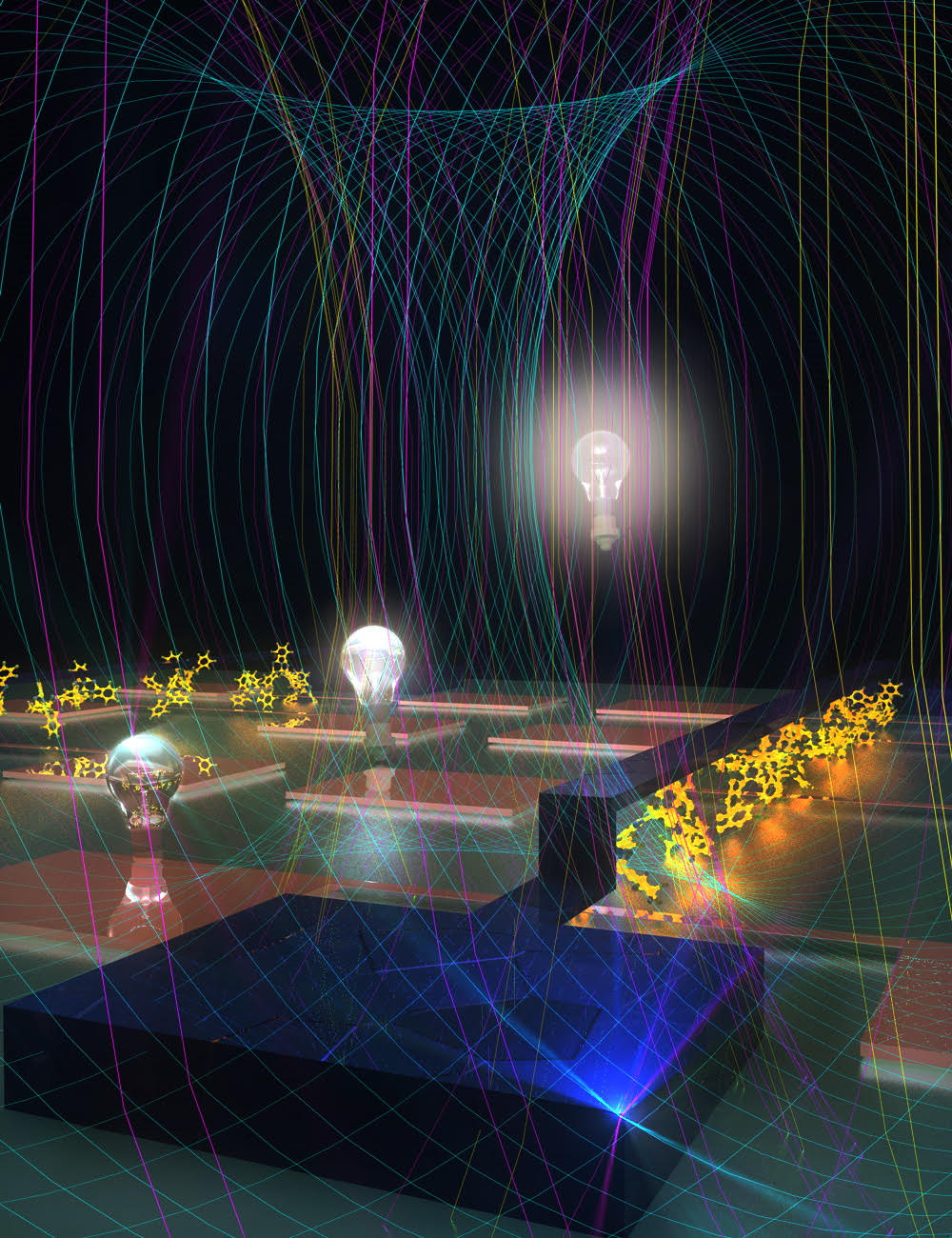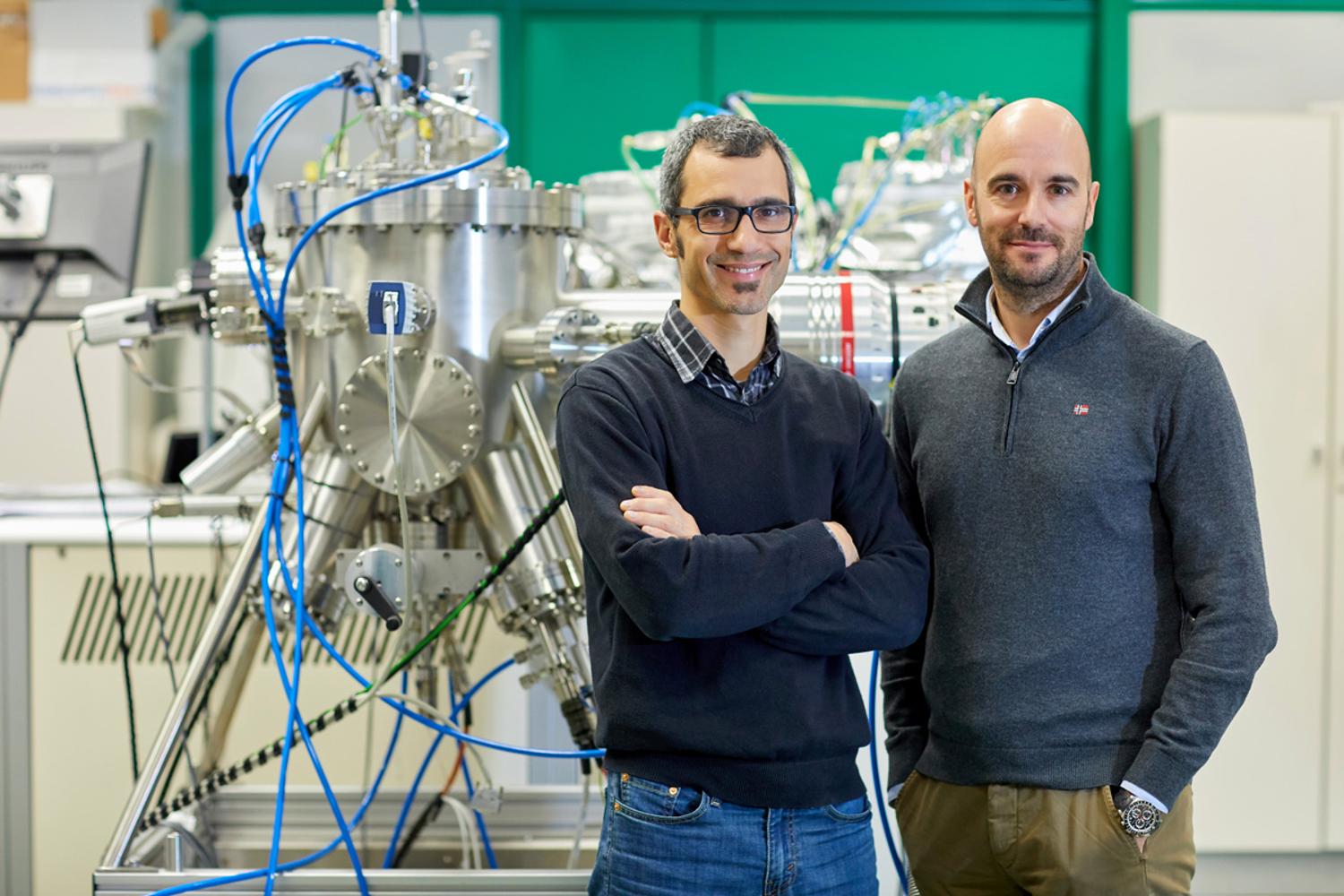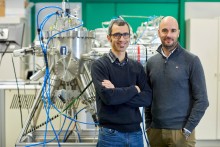Related news by tag Luis. E.Hueso
Magnetic electrodes increase solar cell efficiency

As the nanoGUNE researcher explained, “the device is simply a photovoltaic cell manufactured from an organic material —fullerene C60— and fitted with cobalt and nickel magnetic electrodes”. Fullerene C60, known as Buckyball, is a ball-shaped molecule comprising 60 carbon atoms. What is more, the magnetic electrodes produce current with an added property known as spin. The combination of both is no coincidence since fullerene is known to be a photovoltaic material that could allow the spin direction to be controlled. The use and control of this properly allows the efficiency of the solar cell to be increased, thus making it capable of generating a bigger current. As Hueso explained, “the spins of the usual solar cells are ‘disordered’ but thanks to magnetism we have managed to ‘order’ them so that a bigger current can be collected”. The researchers have confirmed that the use of electrodes of this type increases the photovoltaic efficiency of the device by 14%.
The device has another added advantage as it has been found to be capable of directly generating alternating current, which is much more useful in applications than the direct current generated by the usual solar cells, as transformers no longer need to be used. “The reversal of the current takes place in the device itself when the electrons created by the light interact with the magnetic contacts, whose spins have been ‘ordered’,” explained Hueso.
Even though it is true that the researchers have demonstrated that the use of magnetic electrodes allows the efficiency of the photovoltaic cells to be increased, they insist that they are still a long way from obtaining an optimum photovoltaic cell. With this aim in mind they are working on building similar devices using organic materials which have already shown themselves to be more efficient than fullerene. The researcher affirms that “in the future it will be possible to build a commercial device that acts as a solar module and produces alternating current directly”.
This work is the result of a piece of research funded by the Government of the Basque Autonomous Community, the Spanish Ministry for the Economy and Competitiveness, and the European Union through the European Research Council.
CIC nanoGUNE is participating in two European projects to train young researchers
Edurne Sagasta, winner of the GEFES 2019 Award for best experimental thesis
This thesis explores the Hall spin effect, an effect that takes place in metals with spin-orbit coupling and allows charge currents to be converted into spin currents and vice versa. These conversions are of huge technological interest as they have the potential for use in the process to write magnetic memories (like MRAMs) and to read them (as in spin-based log circuits, a recent proposal by Intel). This research has revealed the mechanisms that contribute towards this effect in certain metals, such as platinum (Pt) or tantalum (Ta), which has made it possible to show how the efficiency of this conversion can be enhanced. Platinum (Pt) has also been combined with graphene to produce a device that can efficiently convert spin currents into charge ones.
The Hall spin effect is related to the anomalous Hall effect, known since the 19th century but little understood until recently. The second part of the thesis shows that this relationship in ferromagnetic materials is more complex than previously thought.
Edurne Sagasta
Edurne Sagasta studied physics at the UPV/EHU-University of the Basque Country and after getting a Master’s degree in Nanoscience and Advanced Materials at the same university, she started her PhD thesis at nanoGUNE. ”After studying Physics at university, I wanted to do something that would be more practical. At the same time, I wanted to get involved in a project with more people and have the chance to visit different labs across the world; in short, to embark on a research project,” said the researcher. "Once I had finished my PhD, I decided to make the leap to the world of industry, and right now I am working for the company Mondragon Assembly,” she said.
A project coordinated by CIC nanoGUNE receives nearly 4 million euros from the European Commission

SPEAR has been selected by the European Commission for funding within its ITN programme. The 4-year project will receive nearly 4 million euros. This funding will be used mainly to fund the recruitment and high-level training of 15 pre-doctoral researchers. SPEAR is led by Fèlix Casanova, an Ikerbasque Research Professor in the Nanodevices Group at nanoGUNE.
“The research aims to find new materials with strong spin-orbit coupling, to explore new phenomena associated with these materials, and to develop devices based on these phenomena for the upcoming generation of computer memories and processors,” said the head of the project at nanoGUNE. “Unlike conventional RAM memory, data will not be stored in the form of electric charge or current flows, but by means of magnetic storage components in the next generation of memories, such as MRAM (Magnetic Random Access Memory). To substitute current microprocessors using silicon transistors we also have various candidate technologies, such as spin logic or MESO logic, machine learning and neuromorphic computing, which would stand to benefit from these new materials,” added Fèlix Casanova.

